Hello everyone, and a big uppercase WELCOME to my new subscribers — it’s wonderful to have you here! (And thanks again to the great and glorious Edith Zimmerman of Drawing Links, who at this point should really be getting a cut of my proceeds.)
I hope all of you lovely new readers will enjoy my ramblings, and I also beg your patience: this is a monthly newsletter, because, unlike a lot of those dedicated Substack full-timers out there, I’ve got a day job. A day job that I LOVE, of course! (My boss reads this.) (Hi, David)
A quick rundown on how Dearest works: I have zero plan in mind when I set out to write a newsletter; I literally just root through current and upcoming auctions and write about whatever I think is cool. It’s very random and chaotic, but it also keeps things interesting — for me as well as you (hopefully). Ok, on to the good stuff!
The wonderful little piece above is a Victorian white metal hawk bell that dates to around 1860, and it’s included in today’s Un autre regard : Collection Edric van Vredenburgh1, Part I sale at Sotheby’s Paris.
The bell is inscribed:
£ 2 reward HH Prince Duleep Singh Mulgrave Castle Whitby Yorkshire If caught alive put the hawk in a hamper give it some fresh meat or birds not salt meat send it addressed
The inscription tells us the bell belonged to Prince Duleep Singh of Lahore, (1838-1893), the last Maharaja of Punjab.
The Maharaja Duleep Singh (1838-93), signed and dated 1854 by Franz Xaver Winterhalter (1805-73). Royal Collection Trust / © Her Majesty Queen Elizabeth II 2022
Duleep Singh became Maharaja at the age of five following the death of his father in 1843, but he didn’t hold the throne long. The British won the second Anglo-Sikh War in 1849, and the 11-year-old Maharaja was forced to sign the Treaty of Lahore, surrendering his kingdom, throne and fortune to the British. He also had to hand over another treasure: the famed Koh-i-Noor diamond, which of course now resides in the British Royal Collection, set into the Queen Mother's Crown.
[Side note: In the 1870s, Queen Victoria wrote to her eldest daughter Victoria that “No one feels more strongly than I do about India or how much I opposed our taking those countries and I think no more will be taken, for it is very wrong and no advantage to us. You know also how I dislike wearing the Koh-i-noor.” ……….She still kept it, though.]
The young Maharaja was given a yearly stipend and sent to live in England, where he grew up close to the royal family, eventually converting to Christianity and asking Victoria and Albert to be godparents to his firstborn son. He lived a fairly lavish lifestyle and married and had multiple children, but he eventually chafed at having his every movement monitored by the East India Company. He tried to return to India in the hope of reclaiming his land, but was intercepted by his handlers and forced back to Europe, although he did manage to convert back to Sikhism. He died in Paris at the age of 55.
The hawk bell dates to his stay at Yorkshire’s Mulgrave Castle, which he leased from 1858-1863. He particularly enjoyed grouse hunting and falconry, and this pdf from the North Yorkshire Moors Association quotes this contemporary account of the Maharaja out hawking:
“We were enormously aroused by a motley crew marching in line across the moors. In the centre was a fine stalwart man of some five and twenty summers, arrayed in gorgeous oriental dress – the Maharajah Duleep Singh. On either side of him were two swarthy sons of India, his Royal Falconers, with belled hawks on their shoulders, while six English gamekeepers in scarlet uniforms and a crowd of domestics filled up the picturesque tableau. It was His Royal Highness taking his sport a-hawking across these wilds. A picture, in truth, worthy of the limning of Landseer.”
This little emerald, diamond and pearl brooch was included (but didn’t sell) in the Christie’s Jewels Online and The Flawless Star auction last week. Christie’s is calling it the “Dalinian Ghost” brooch, and according to them it was first designed sometime around 1975 as a napkin ring. It comes with its original linen napkin, which is embellished with pearls and seed pearls and embroidered “G Dali,” presumably for Gala Dalí, Salvador’s wife and muse.
The piece — in napkin ring form — originally sold at Christie’s back in 1993 for $2,875, and they referred to it as the “Dalinian Ghost” then, too. I have no idea what it means.
(Also, in case you were wondering, the “Flawless Star” mentioned in the auction title is a Type IIa 45.46 ct round brilliant-cut diamond that sold for $4.6 million.)
The Spring Magnificent Jewels auctions are starting, and today Christie’s New York will kick things off with their Magnificent Jewels Including the Fuchsia Rose Diamond auction.
The titular Fuchsia Rose is an 8.82 ct fancy intense purple-pink pear modified brilliant-cut diamond and it’s set in a platinum band and flanked by two 0.61 ct. pear shaped brilliant-cut diamonds. Pink diamonds are always sought after, and this one carries an estimate of $4 to $6 million. It’ll be interesting to see how this one sells, as JCK reminds us of the Sakura, a larger (almost twice the size) purple-pink diamond that sold for $29.3 million last May at the Christie’s Hong Kong Magnificent Jewels sale, “becoming the most expensive diamond of its kind ever to be auctioned.”
Some people like to sneer at Tiffany & Co. — and yes, it was the brand that all the rich blonde girls wore in high school — but Tiffany’s reach goes so much farther back than a “Return to” bracelet on a Main Line lacrosse player’s arm.
Tiffany & Co. was founded in 1837 by Charles Lewis Tiffany (Lewis Comfort Tiffany’s father) as a gift shop, and they soon expanded into jewelry — but they sold other things, too, and many of those things tell the history of our country. I’m not going to go into their whole backstory here because that can literally fill books, and Substack is already telling me I’m over the limit — but just a couple of examples: During the Civil War, they pivoted and supplied the Union Army with swords and medical implements, and in 1858, following the laying of the first transatlantic telephone cable, they capitalized on the nation’s excitement and bought up all the excess cable, selling bits of it for $.50 each.
The gold, enamel and diamond pendant-watch above is also historical. Circa 1900, it’s signed Tiffany & Co. and engraved with the words “some of the earth from the first shovelful, taken out by mayor Van Wyck, at the Breaking of ground for the Underground Railway, March 24, 1900.”
According to Christie’s:
The New York City subway system traces its origins back to John B. McDonald (1844 – 1911), an Irish emigrant responsible for overseeing the construction of the city’s first subway line. With strong political backings and Irish ties to Tammany Hall, McDonald secured the bid of $35 million dollars to build New York City’s subway system. Beginning construction in 1900, the project was one of the city’s most complex designs extending from City Hall in downtown Manhattan up to 145th Street in Harlem. Construction would take four years and stretch over 23 miles.
The watch belonged to Georgie Annie McDonald, John McDonald’s daughter, and it was created by Tiffany & Co. to commemorate the opening of the subway. It features a domed crystal back that contains a clump of dirt taken from the groundbreaking ceremony on March 24, 1900, and is also engraved with Georgie’s initials.
The watch was a gift to the present owner’s grandmother from Georgie herself, and this is the first time it has appeared at auction. It’s estimated at $20–30k, but one-of-a-kind items like this are nearly impossible to estimate, so we’ll just have to sit tight and see what happens.
This adorable little circa 1930 electroplate airplane breakfast set was made by London silversmiths A. E. Poston & Co. Ltd., and features a toast rack, a four-person egg cruet (with spoons), and a three-compartment vase.
Each piece is modeled as a French biplane with flags on the rudders and moving wheels and propellers. The set is included in the Sotheby’s London online Easter Feast auction, which ends on April 20th.
Feel like channeling your inner Joan Crawford? Consider this citrine and gold jewelry suite she commissioned from Raymond Yard.
It’s being offered in Heritage Auctions’ Spring Fine Jewelry event on May 2nd, and consists of a necklace, brooch and bracelet, each one bigger than the last. The citrine in the necklace is 357.60 cts! Crawford wore the suite in the 1941 film When Ladies Meet and also in a print ad for Royal Crown Cola, which Heritage have helpfully tracked down for us:
I swear the email length limit decreases with every month, because Substack is seriously barking at me today and this one’s not really that long! I just had to delete my fricking LOGO to get it under the limit — but it was that or Joan, and Joan always wins.
In other news, I’m enjoying the whole paid email experiment, and so far I’ve released two of them: one that enthused about an antique acrostic ring that literally spelled “regret,” and another that focused on pallasites, which are extremely badass gem-studded meteorites. So basically just more random nonsense? I can’t believe some of you are willing to pay for this, but I adore you for it.
In other other news, Substack recently debuted an app. If you find that a lot of your favorite newsletters are languishing in your promotional and spam folders, the app will help bypass that and also keep everything organized in one spot. If you’re interested, here’s the app link for iPhone and iPad:
(They’re still working on the Android version, but you can get on the waitlist here.)
That’s it for now; I hope you all enjoy the rest of your week!
M xx
Dearest is a monthly newsletter dedicated to the history of antique jewelry. Or, more accurately, dedicated to enthusiastically yelling about the history of antique jewelry. If you would like to offer your financial support for my nonsense, you are welcome to sign up for a subscription at $5 a month or $50 a year. The monthly email will always remain free for everyone, but as a paying subscriber you will also receive occasional single-theme emails highlighting interesting pieces that didn’t make it into the main newsletter due to issues of space or timing.
Hit the button below to sign up for a free or paid subscription, and thank you for being here!
Edric Van Vredenburgh is an antiques dealer and collector who was formerly well known for his shop in London’s Portobello Road. He was forced to sell up in 2007 after being the middleman in the case of a stolen 17th Century Italian baroque marble table top, and has been living abroad ever since. He’s now selling most of his collection and is looking towards a “gentle retirement.”


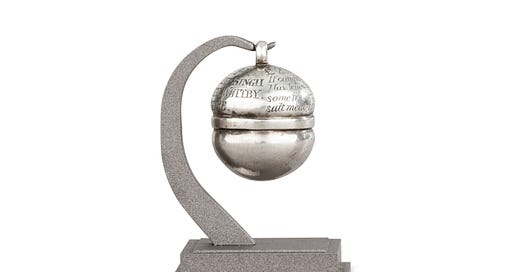

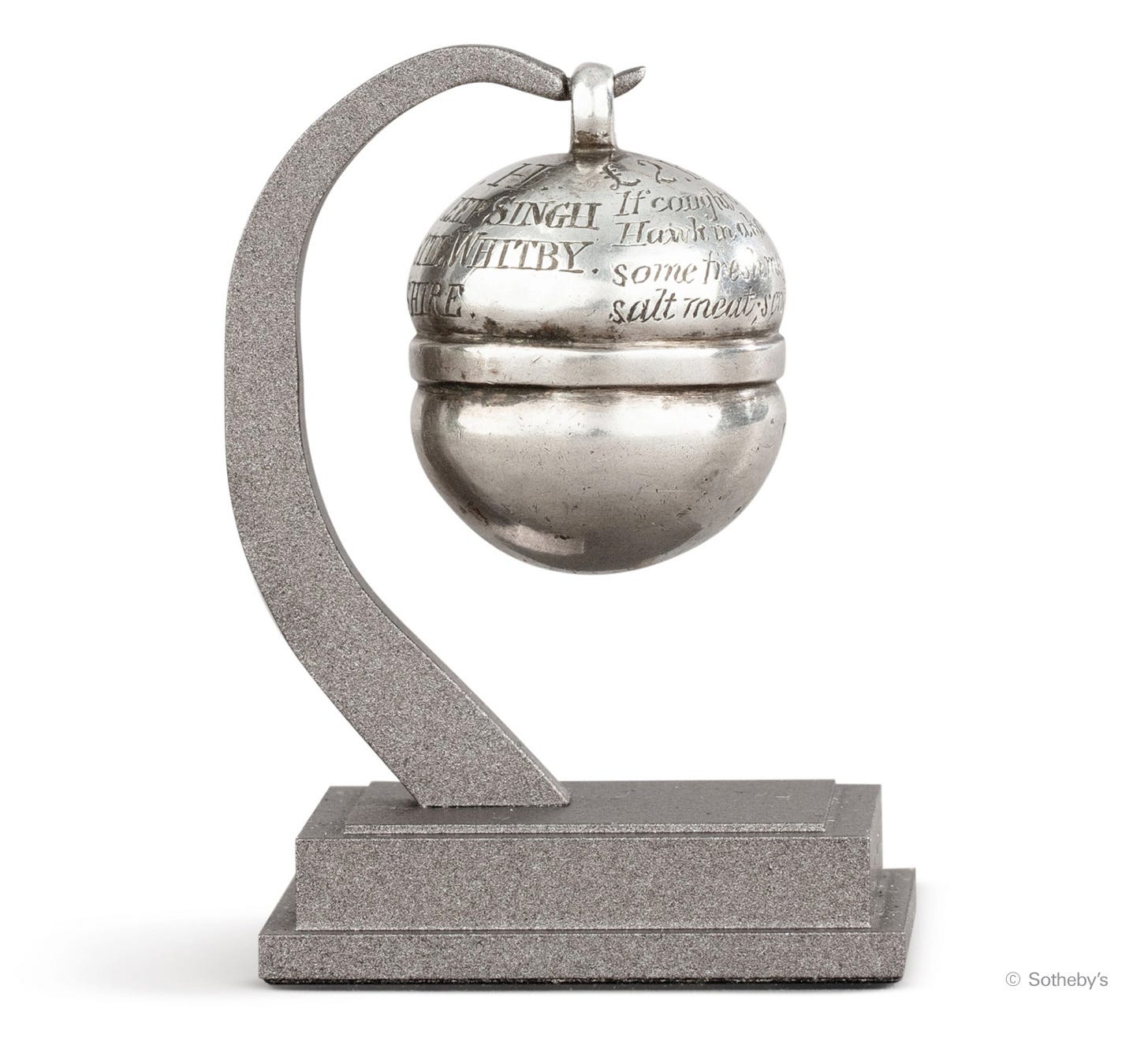
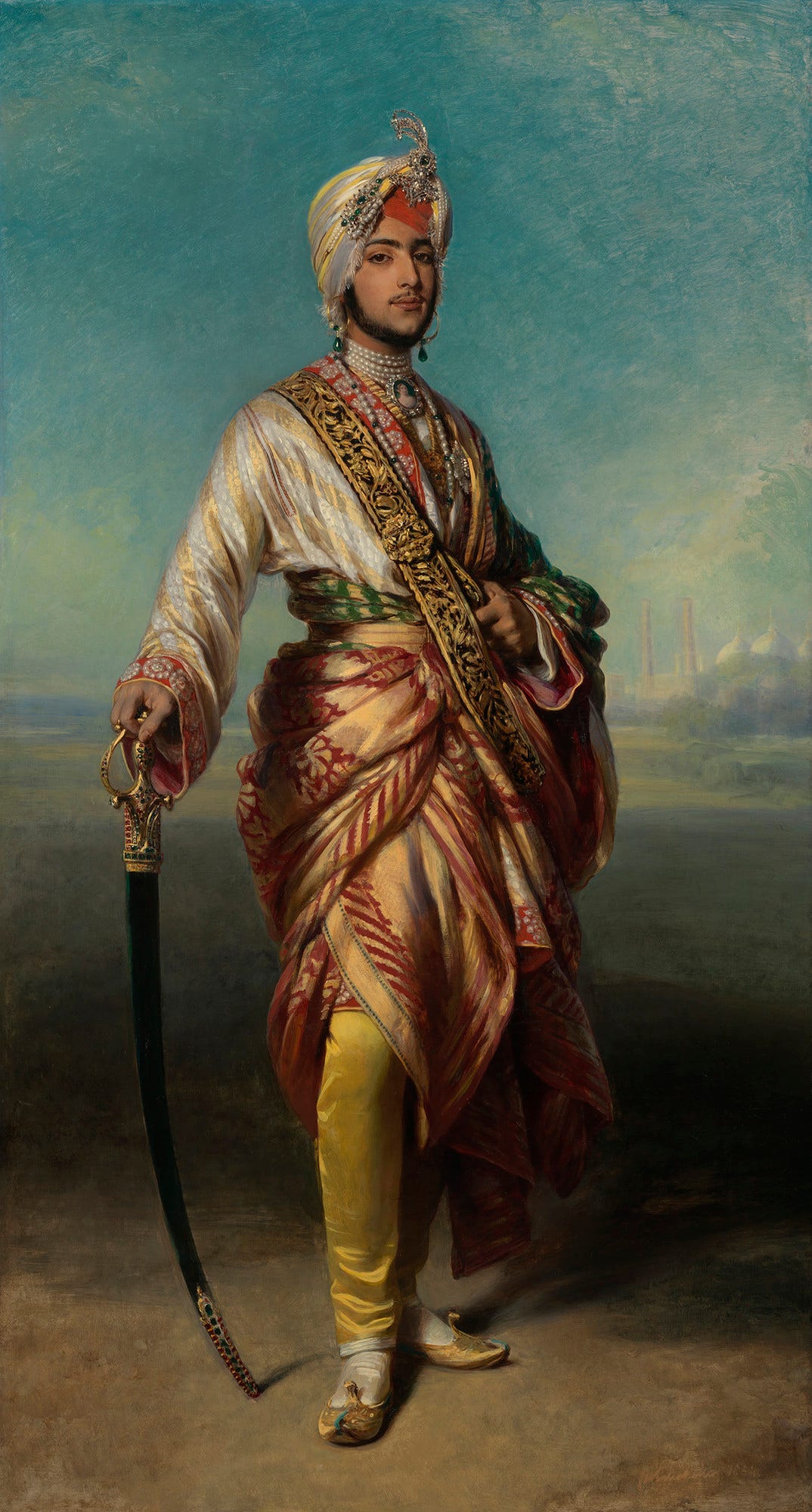
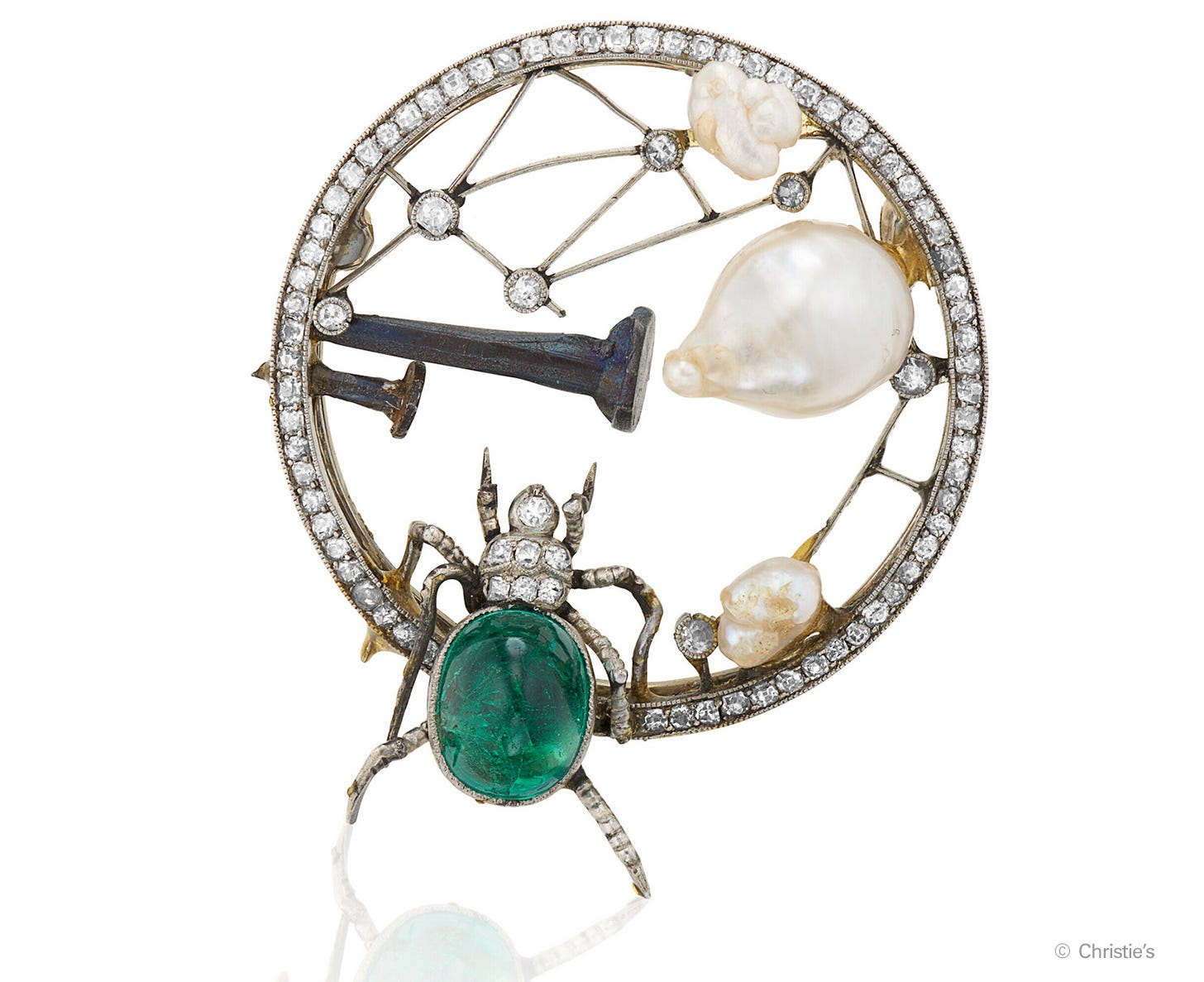
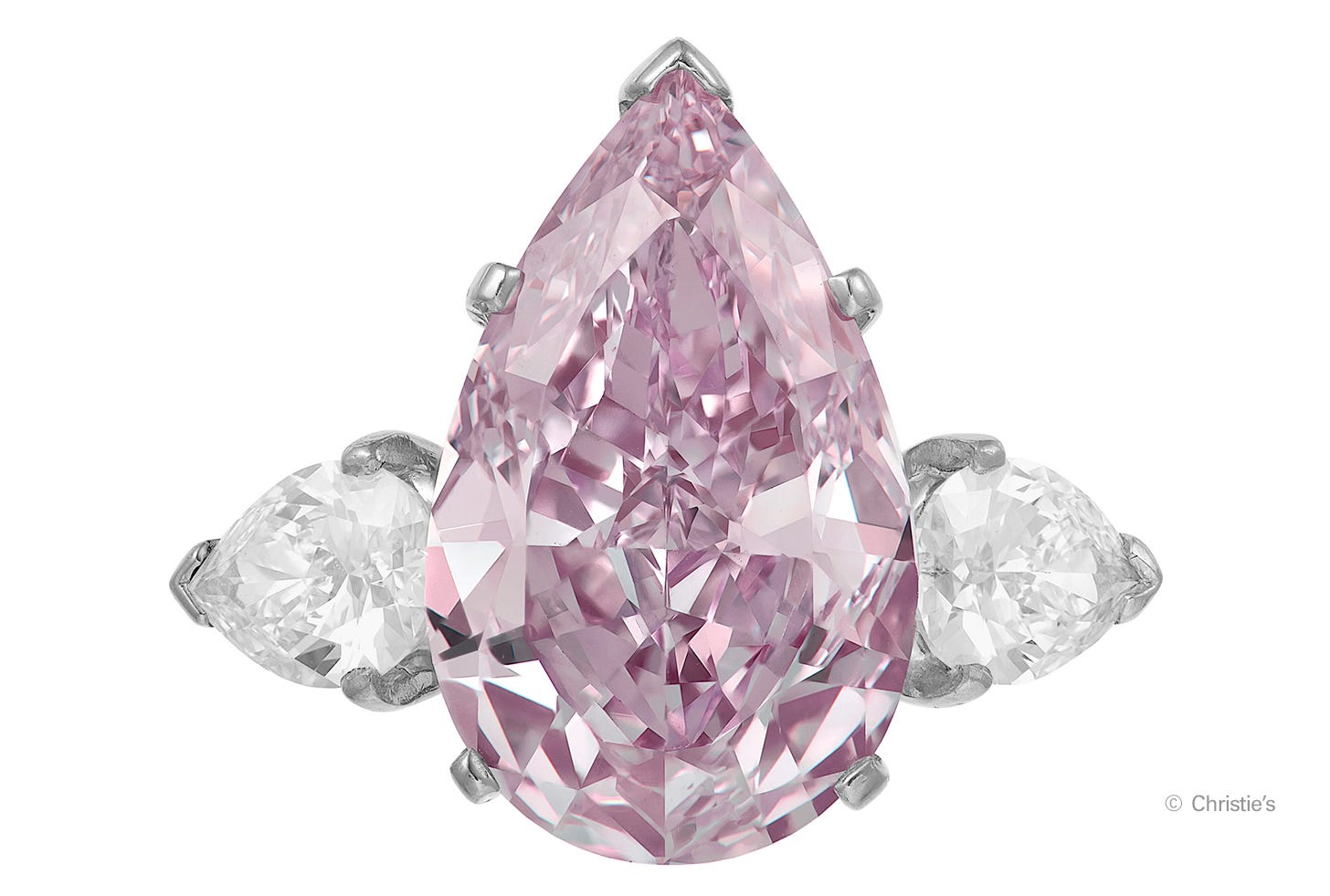
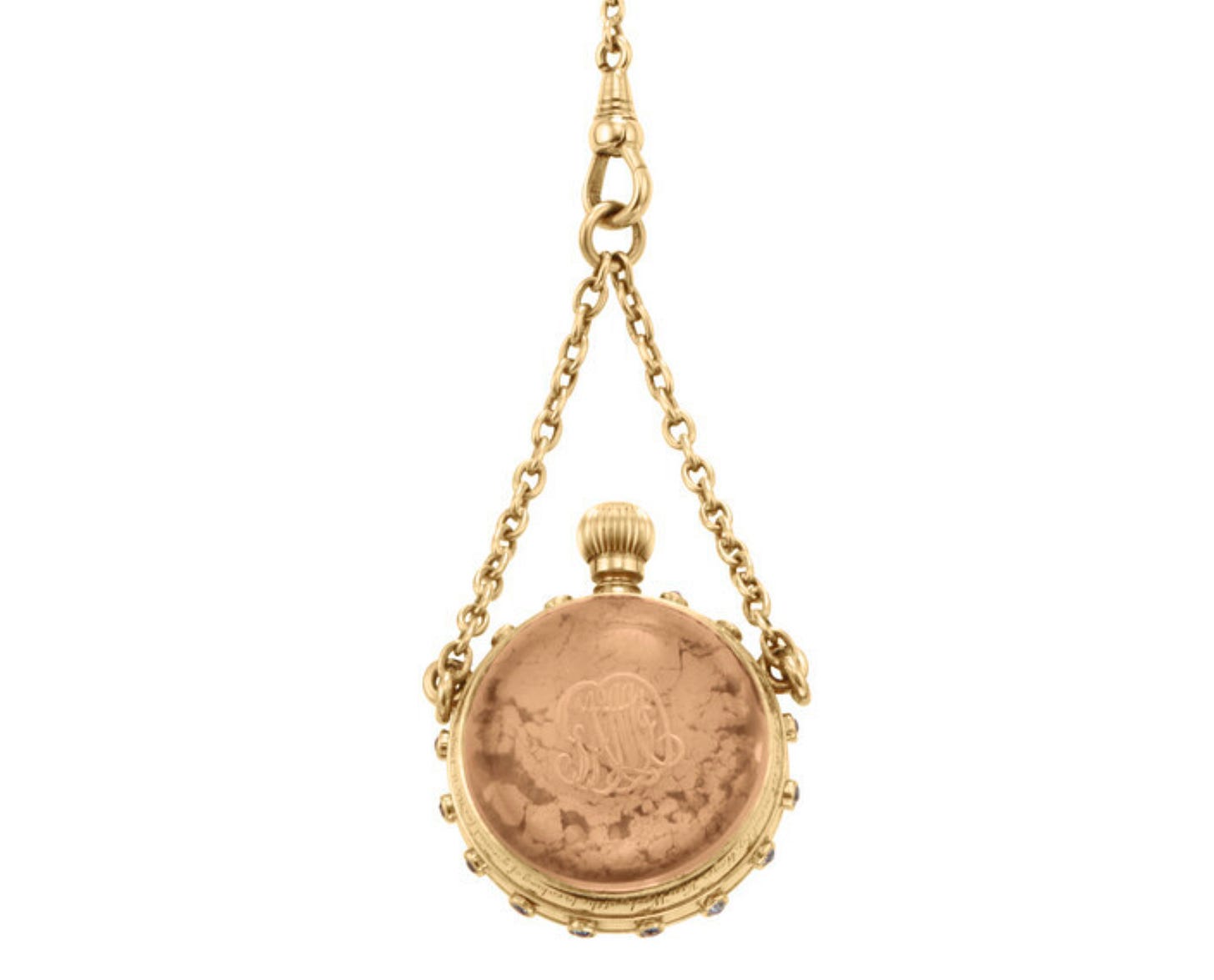
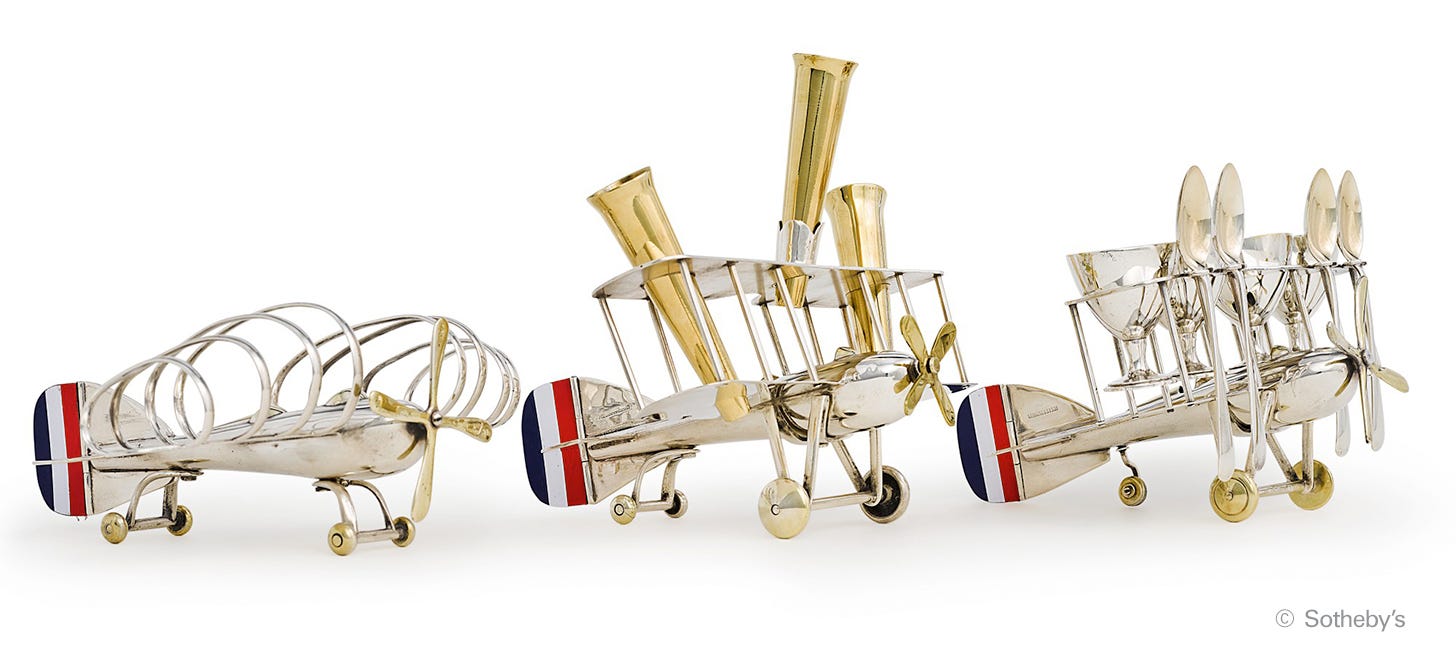
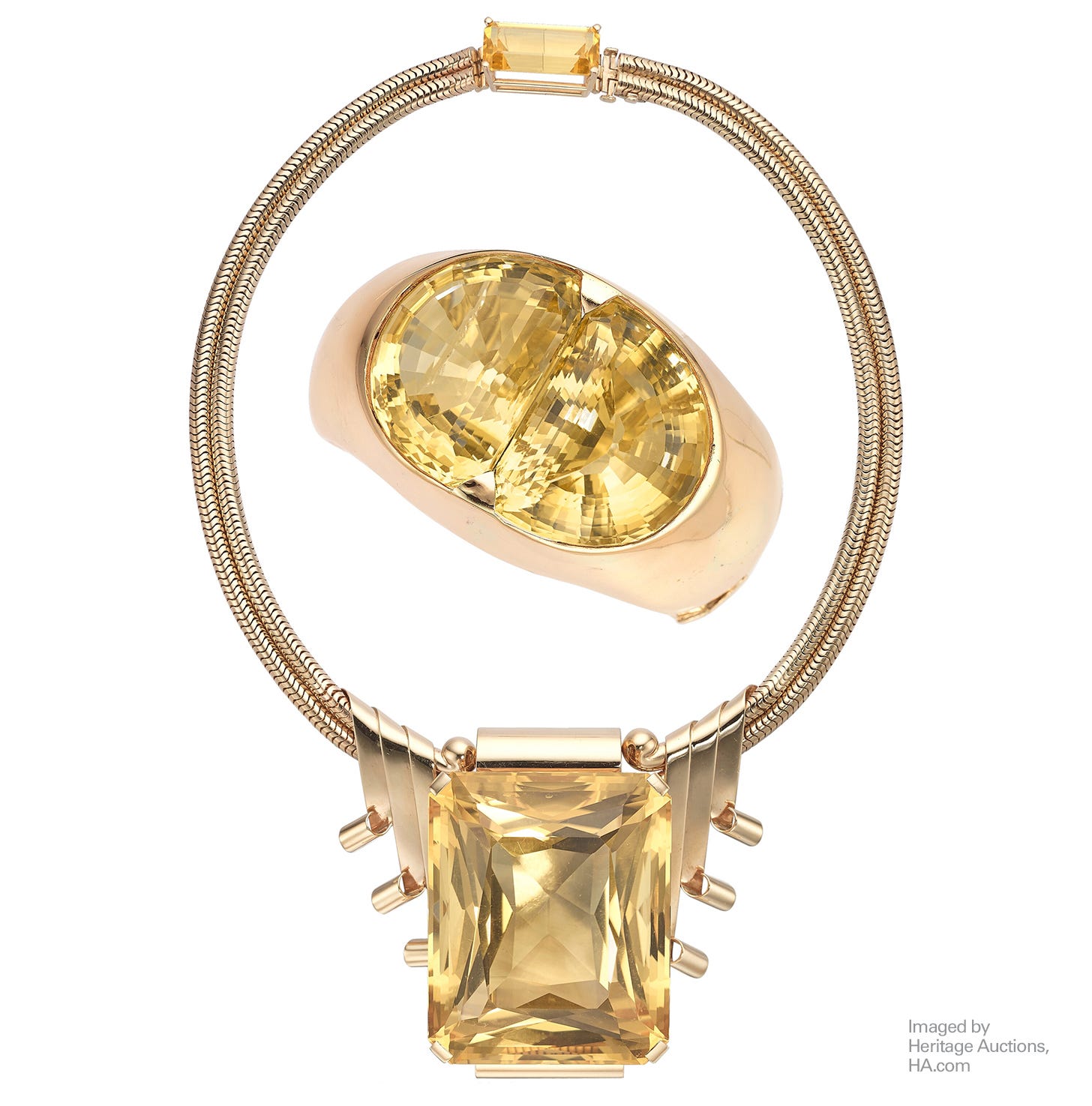
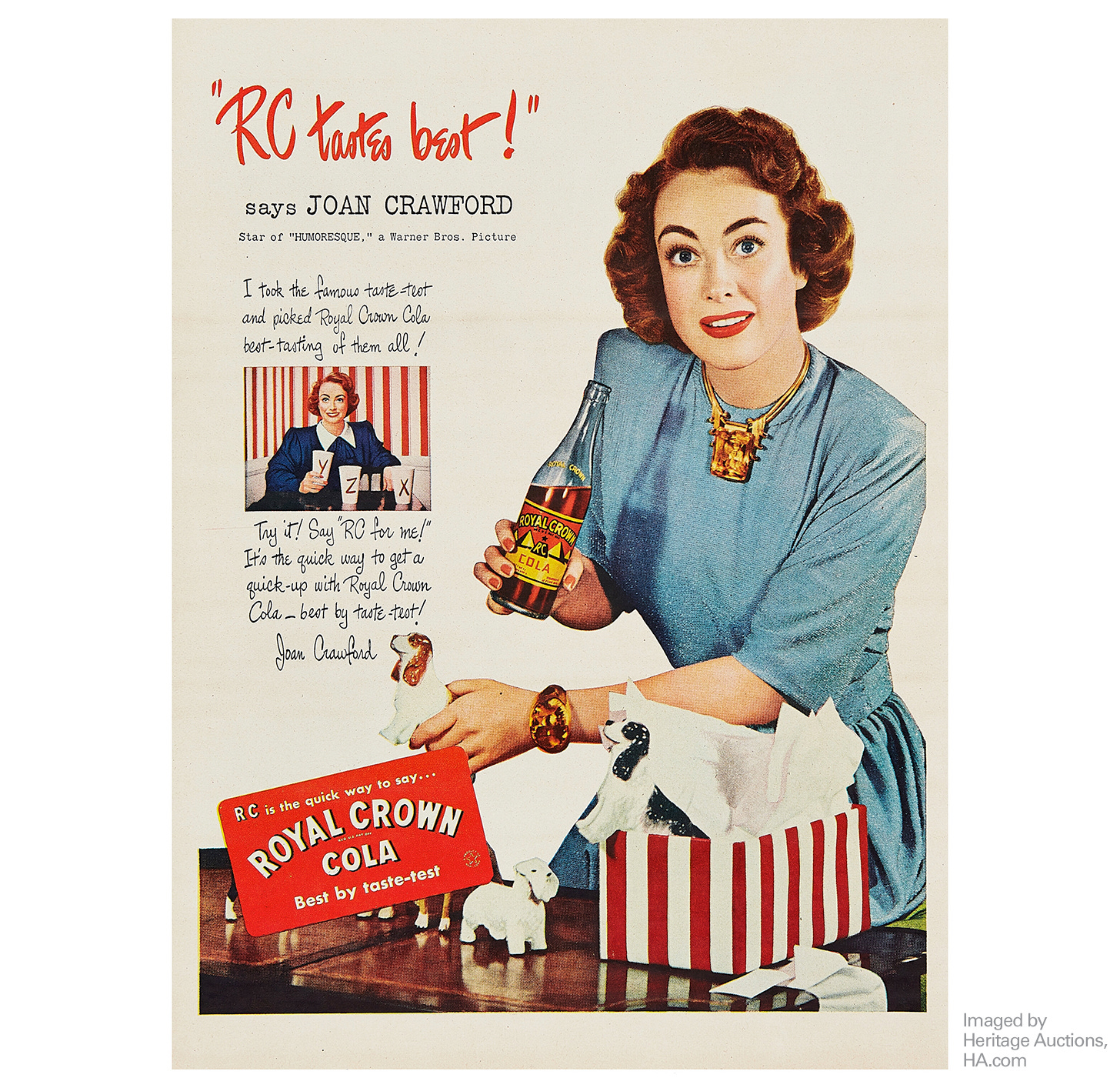

I love the hawk bell and its story, thank you!
I work for Google in the area that builds and maintains our global network. There's an award for individual excellence in moving our strategies forward, and the winners receive a bonus AND a piece of the 1858 cable. I think that's so cool!